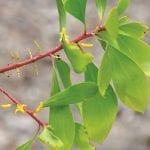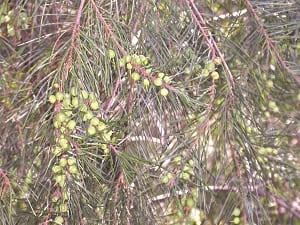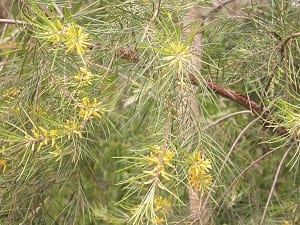By Lachlan Turner - Hidden in the Hills


Numerous native plants found in local bushland are edible.
It is said that the Narrow-leafed Geebung (Persoonia pinifolia) which is a small to medium shrub of open habit is one that its fruit may be eaten. It can be found in open forest, scrub and woodland habitats and is usually in flower from December to July.
However, it is not recommended that people go out into the bush and sample any of these plants, their fruits or their flowers.
It is wise to carry out some research into which plants are, or are not, actually able to be eaten, as there are a number of similar species that could be mistaken for the edible ones. Unpleasant side effects could result if eaten.
Nevertheless, the fruits of Geebungs, were known to be food for the indigenous people who previously lived in local bushland. It is understood that the fruit, in the form of a small berry about 5 to 8 mm in size, must have first ripened, then freshly fallen to the ground before being edible.
Another feature of this plant is its bark. The outside layers are flakey and dark brown to black in colour. When the outer layer is lightly scraped, is revealed underneath a rich red coloured bark.
Indigenous Australians were known to use this bark for medicinal purposes as it possesses healing qualities.
There are two related species, the Broad-leafed Geebung (Persoonia levis), flowering July to December and the Pine-leafed Geebung (Persoonia linearis), flowering March to July, They also grow near each other in the same area. When in flower, their unmistakable yellow flowers make quite a show when growing along a bush track.












